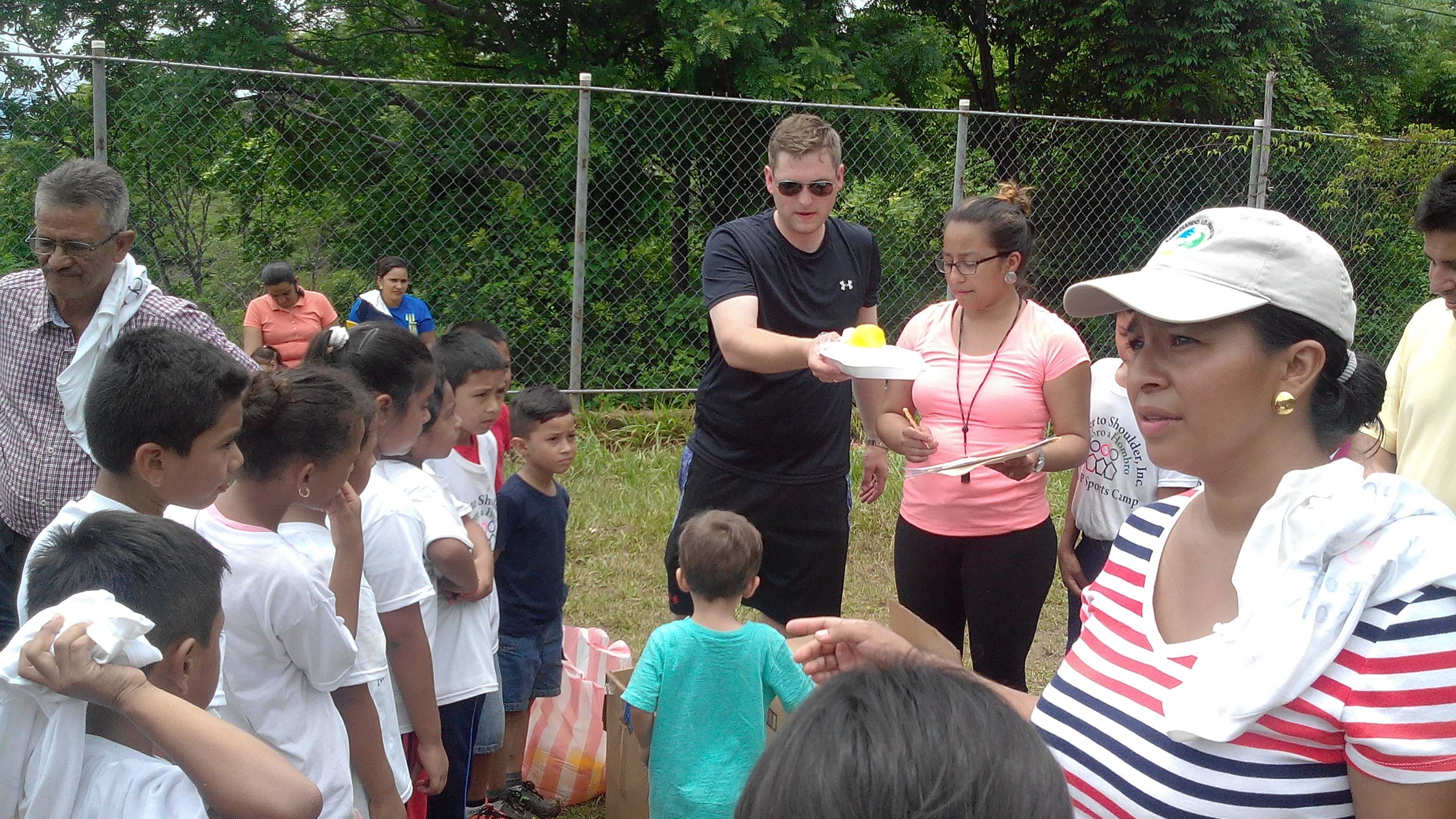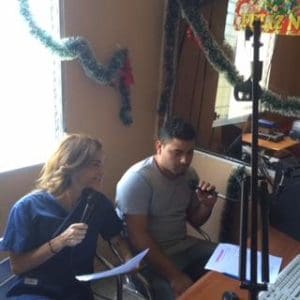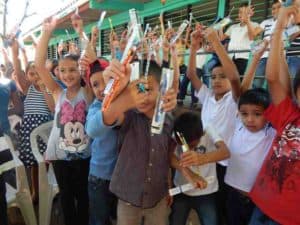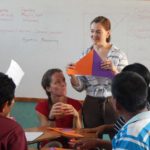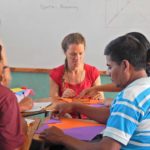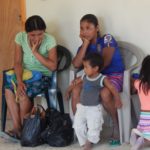What does a three year old have to tell us about the complexity and importance of cultural exchange? A great deal more than you would think. Jonathan Waite, three years old, is the grandson of Wayne Waite, the Board President of Shoulder to Shoulder, and his wife Christina. Jonathan lives in Xenia, Ohio with his parents, Daniel Waite and Nidia Belissa Waite. He is presently visiting his grandparents in Camasca, Intibucá, Honduras, accompanied by his mother. His father will join them this week. Daniel and Nidia have organized a one-week sports brigade for the young people of Camasca with their church, AHOP, A House of Prayer. We’re very much looking forward to their arrival.
Last week, Nidia had to take a trip to Tegucigalpa to attend a high school graduation and she left her son Jonathan in the care of her parents. Jonathan is fairly bilingual, accustomed to hearing English and Spanish at home and using them interchangeably in his verbal communication. Still, those who he is speaking with are most often monolingual and he has a ways to go to figure out who knows which language. Additionally, he’s three, and his vocabulary is still a bit limited. Because of this, when his mother went off to Tegucigalpa, he ended up with a bit of a communication impasse. It seems he didn’t have his favorite t-shirt with him in Honduras. His favorite t-shirt sports a picture of a shark on its front and he refers to it as his shark shirt. His consternation at not having his favorite t-shirt was aggravated and exacerbated when his grandparents could not understand what was causing his angst. His attempts at expressing his great dismay literally fell on deaf ears, and that frustrating sense of not being heard nor understood simply eroded into a terrible state of unparalleled crisis.
It’s bad enough for an adult to be in this situation and I personally can empathize with Jonathan’s plight. There is nothing more terrible or frightful as to find yourself unattached. Your sense of security, of worth and honor, of integrity, begins to crumble, and as hard as you try, there is nothing you can do to stop this freefall into a dark and lonely place. Jonathan perhaps knew enough that the persons around him, his family, could not solve his terrible dilemma. They could not give him his favorite shirt. But it was a thousand times worse that they could not even appreciate the import of the matter. Jonathan’s crisis soon became everyone’s crisis and seemingly not a soul could make any sense out of the simple annunciation, “Shark shirt.”
But his cousin, Eduardo, a second grader at our bilingual school came to the rescue. The word shark in Spanish is “tiburón.” Being only in the second grade, one would not necessarily expect that Eduardo would know the word tiburón, let alone its translation, shark, in English. But as fate, luck, or simply a well rounded education would have it, Eduardo has a friend in the third grade who is something of a budding artist and also likes to draw sharks. The young artist has a pen pal in the fifth grade at St. Mary’s School in Lee, MA with whom he has been sharing his portfolio of a variety of maritime predators otherwise known as sharks. Thus Eduardo was well acquainted with the word. He simply told his family that Jonathan wants his shark shirt, “camiseta de tiburón,” and the crisis that severely threatened a three year old’s trust in his Honduran family was diffused.
Communication, even among people who speak the same language, is often as challenging as it is critical. It is by communication that we discover and invest in relationships. Sometimes I am asked why we are investing so much time and resources in a bilingual school in Honduras. Isn’t that secondary to the tremendous problems that poverty causes? I don’t know. Perhaps Eduardo and Jonathan, having easily overcome a problem for which all of the adults around them were rendered impotent, will actually find solutions to the causes of poverty. Shark means tiburón. This is more profound than you might think.


